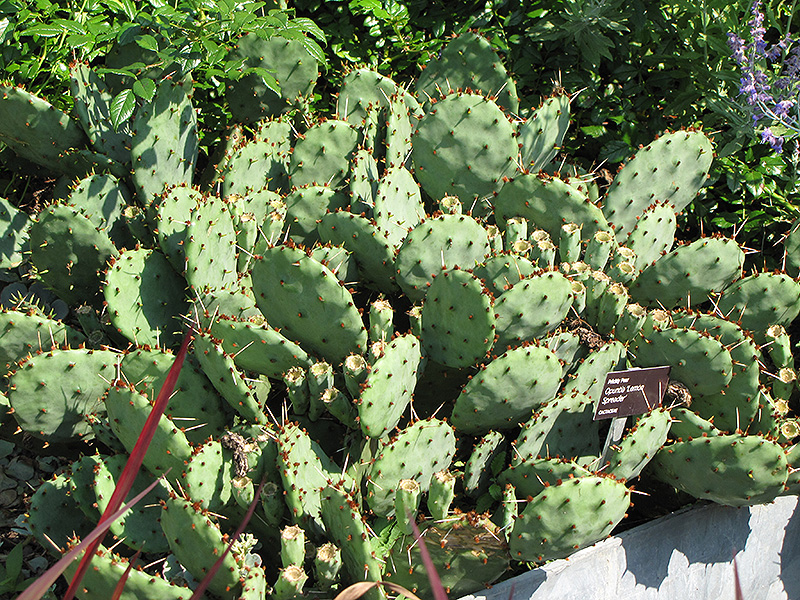Lemon Spreader Prickly Pear Cactus
Description
A low spreading cactus with oval, bright green pads topped with lemon yellow flowers; a relatively spineless selection, but still handle the pads carefully; an edible plant; needs an incredibly dry location to grow
Landscape Attributes
Lemon Spreader Prickly Pear Cactus is a tiny succulent evergreen plant with a spreading habit of growth that trails along the ground. It eventually becomes a spreading shrub-like plant with multiple 'branches' and stems. As a type of cactus, it has no true foliage; the body of the plant is wholly comprised of a linked series of spiny light green pads which are connected together to form the branches of the plant.
Lemon Spreader Prickly Pear Cactus is recommended for the following landscape applications;
Planting & Growing
Lemon Spreader Prickly Pear Cactus will grow to be about 8 inches tall at maturity, with a spread of 24 inches. It grows at a medium rate, and under ideal conditions can be expected to live for approximately 20 years.
This plant should only be grown in full sunlight. It requires an extremely dry, well-drained growing location, and will usually die in standing water. It is considered to be drought-tolerant, and thus makes an ideal choice for a low-water garden or xeriscape application. Like most succulents and cacti, this plant prefers to grow in poor soils and should therefore never be fertilized. It is not particular as to soil pH, but grows best in sandy soils. It is quite intolerant of urban pollution, therefore inner city or urban streetside plantings are best avoided. This particular variety is an interspecific hybrid.
Lemon Spreader Prickly Pear Cactus is a fine choice for the garden, but it is also a good selection for planting in outdoor pots and containers. Because of its spreading habit of growth, it is ideally suited for use as a 'spiller' in the 'spiller-thriller-filler' container combination; plant it near the edges where it can spill gracefully over the pot. Note that when growing plants in outdoor containers and baskets, they may require more frequent waterings than they would in the yard or garden.

